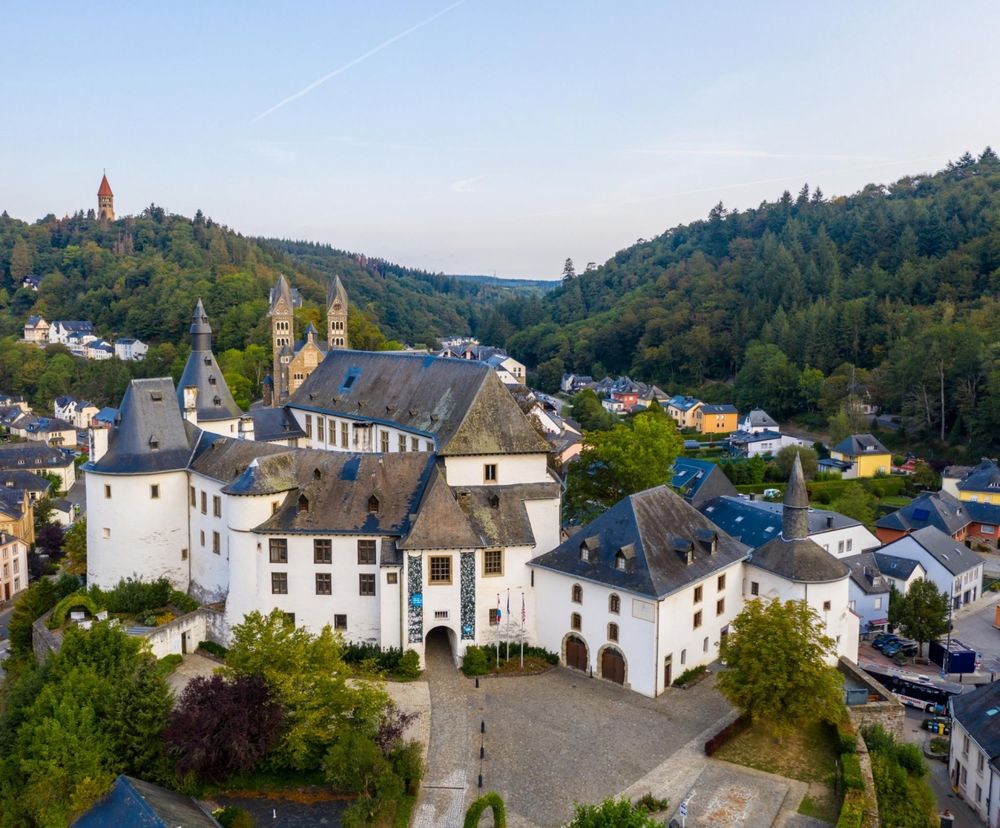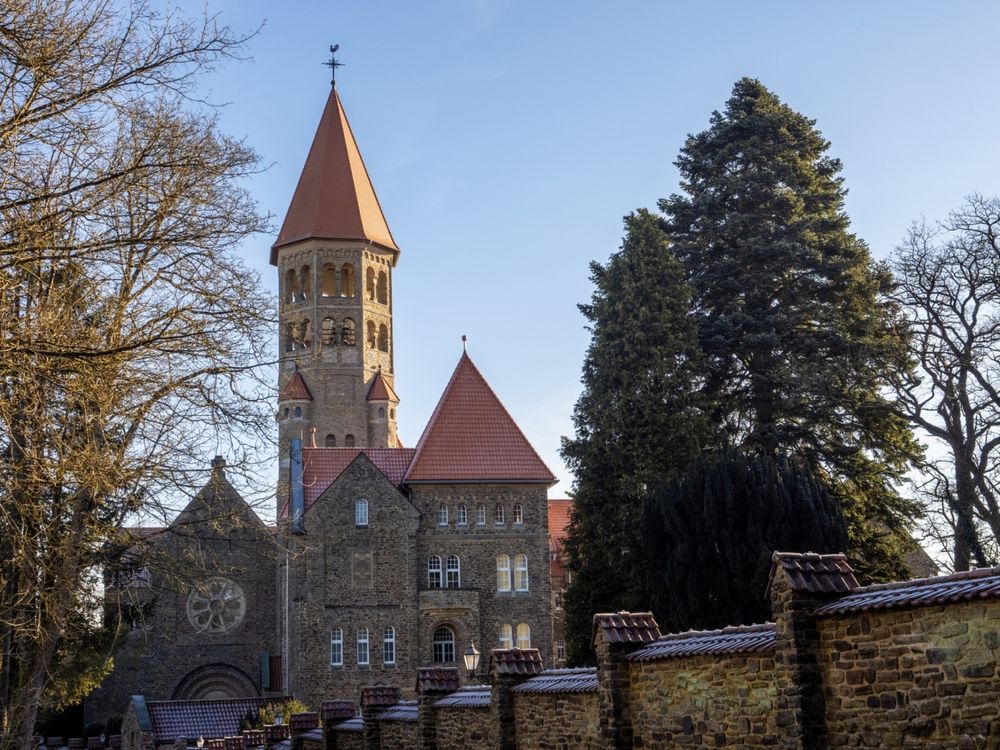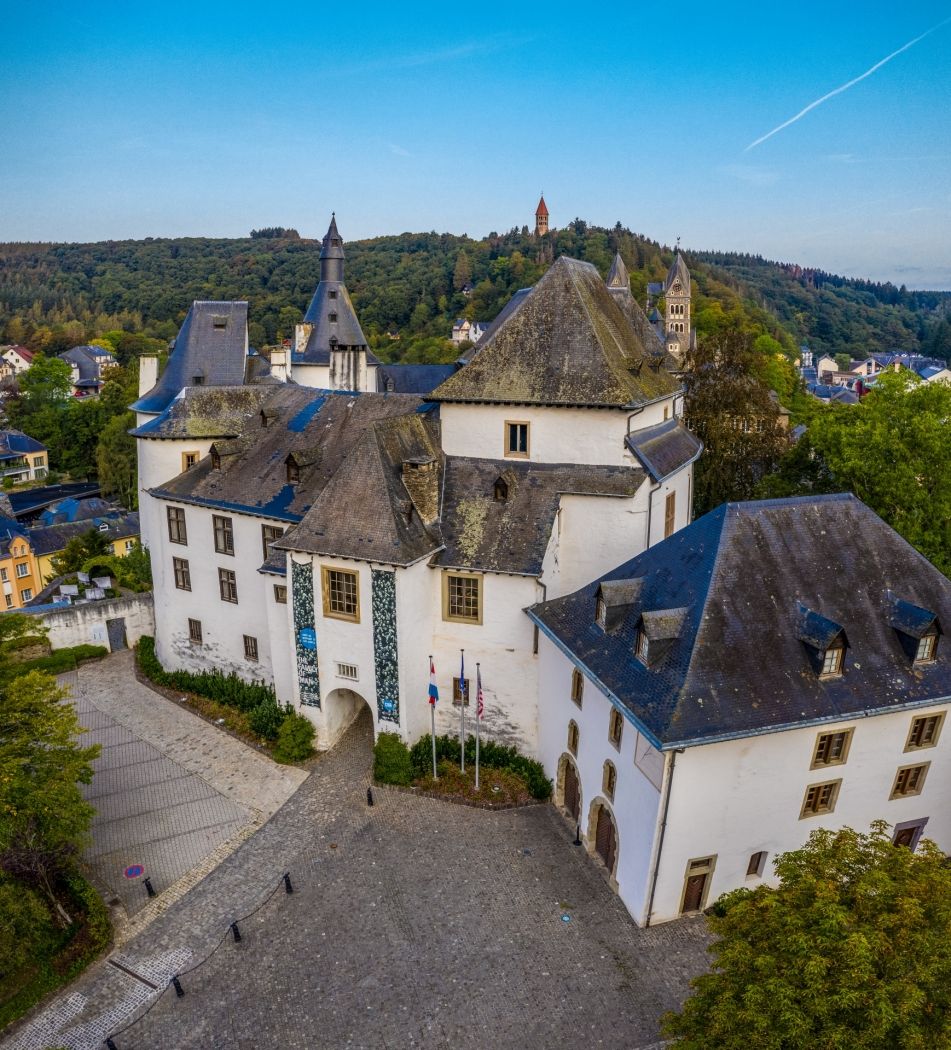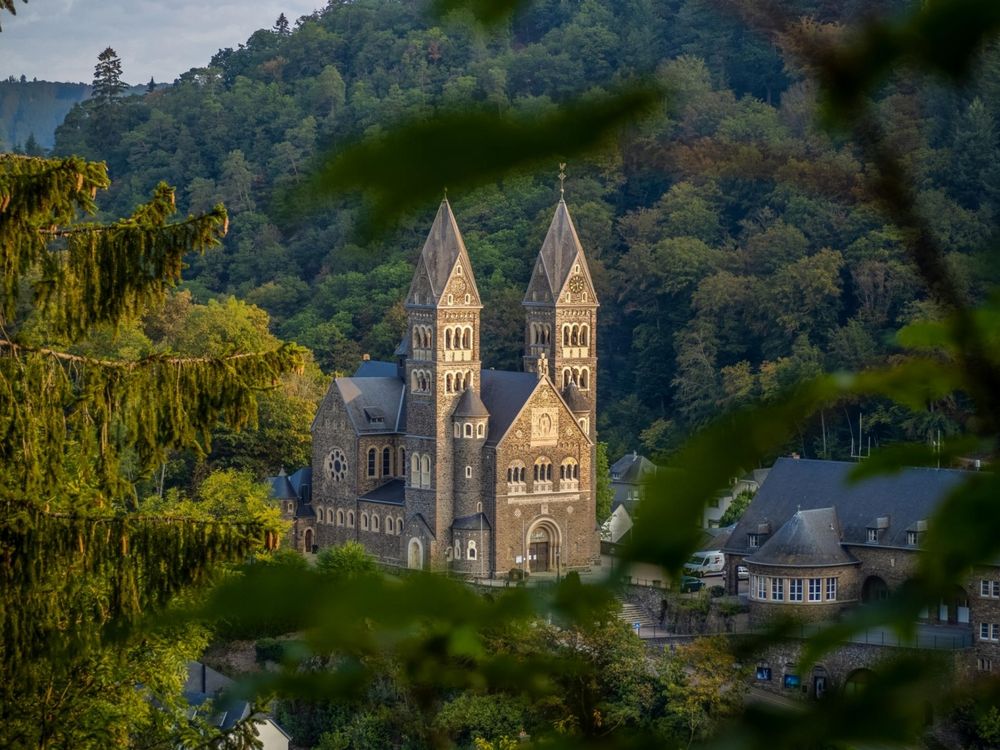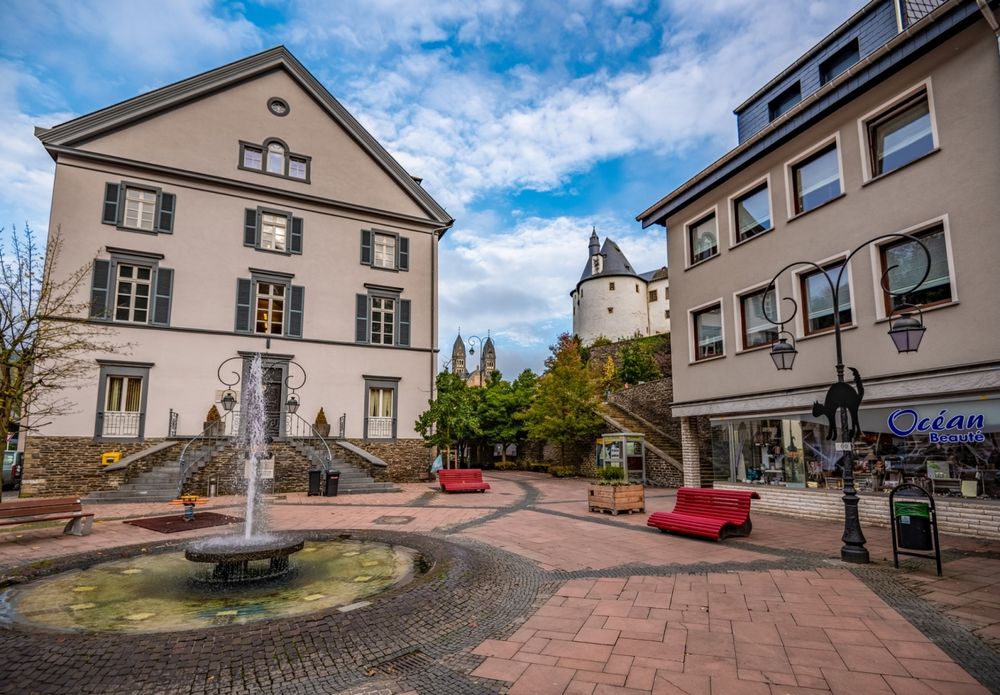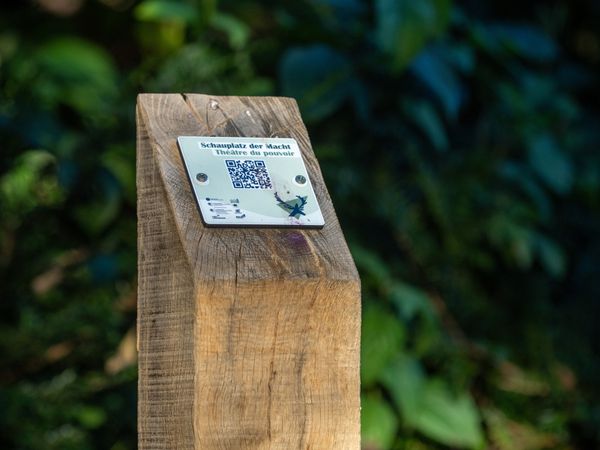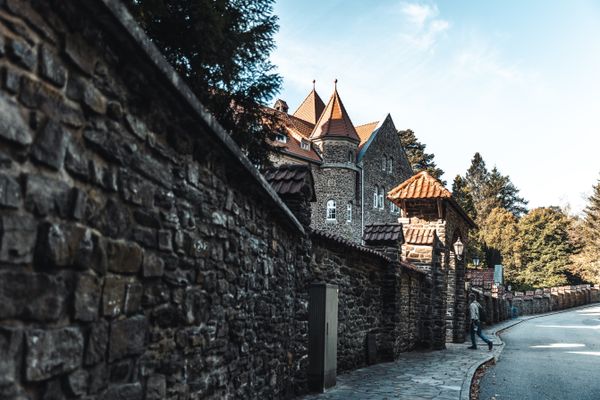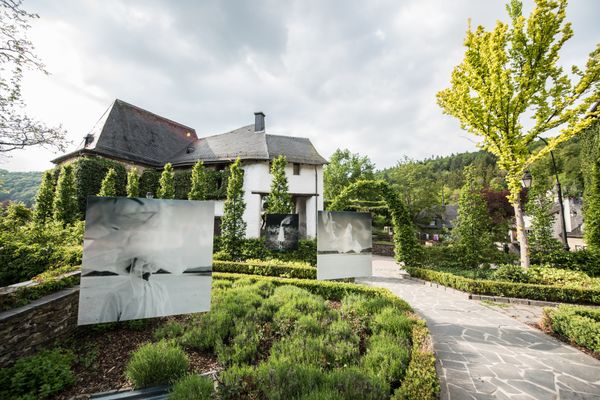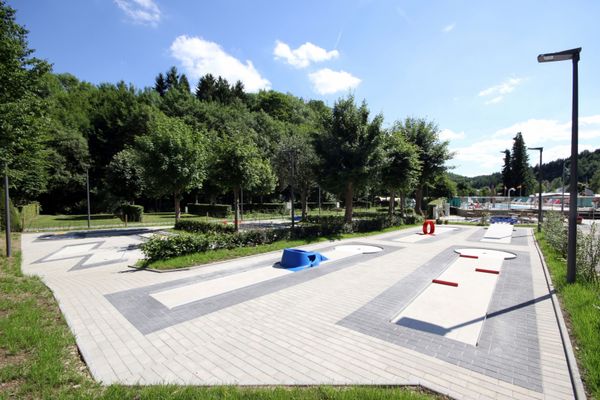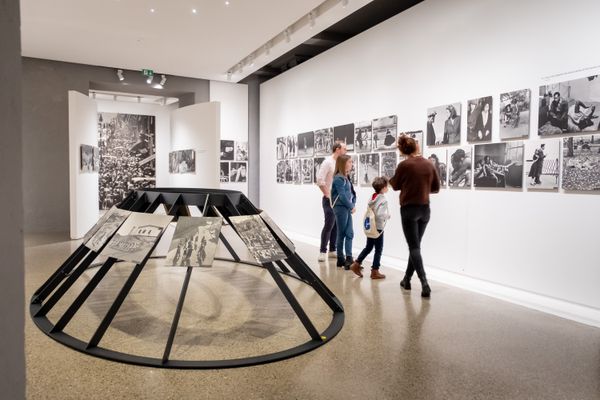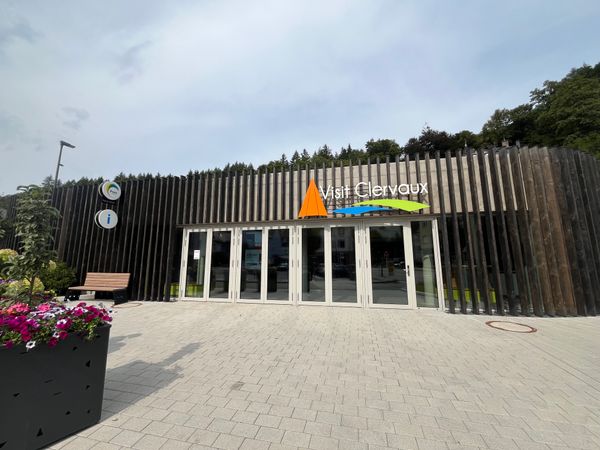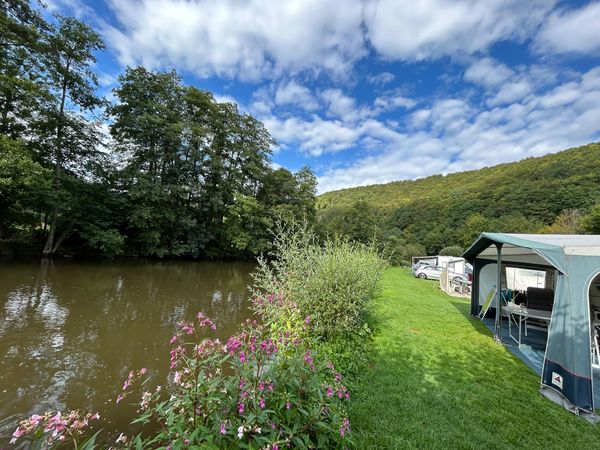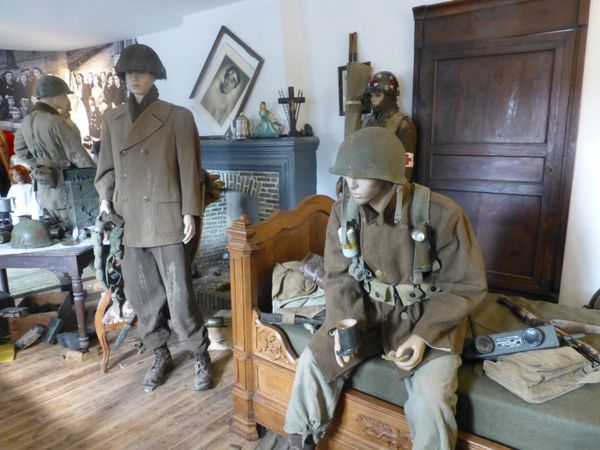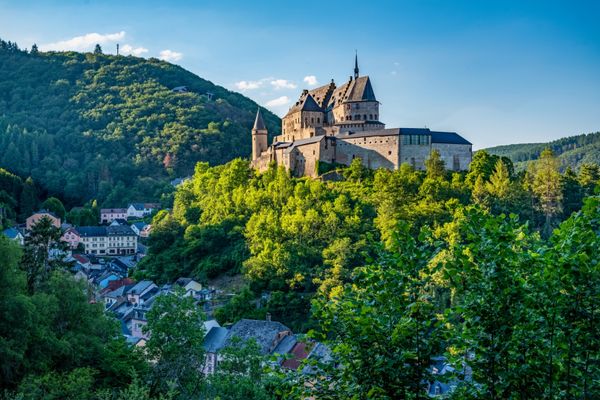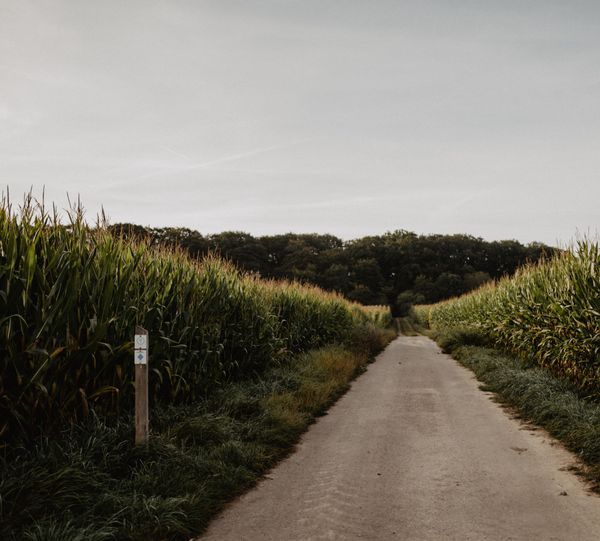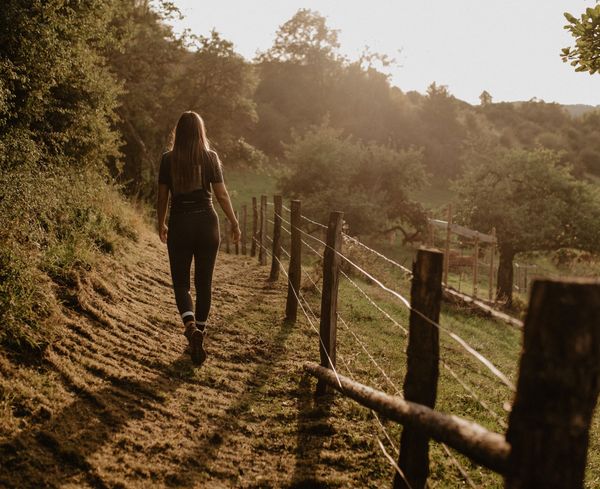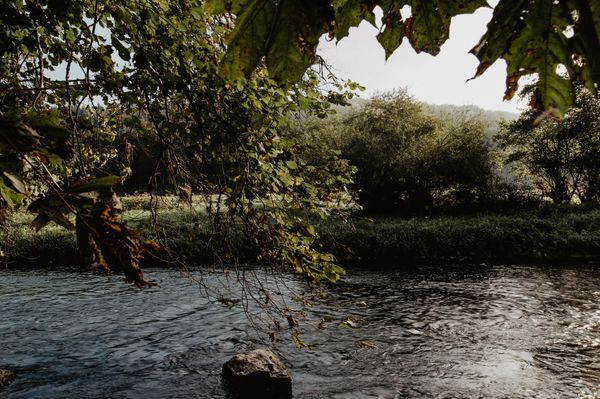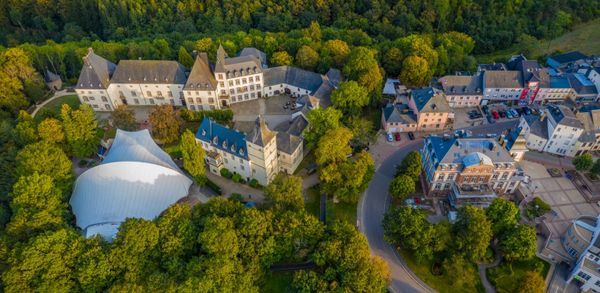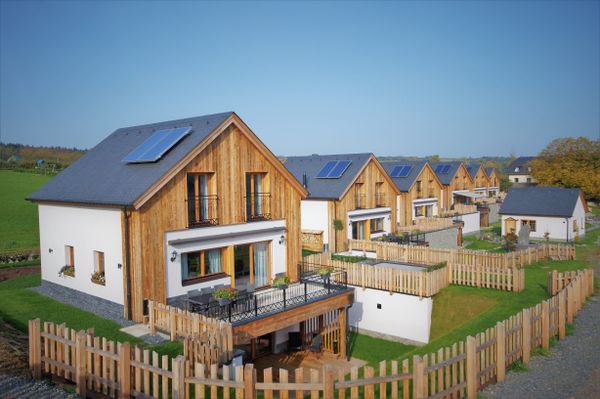
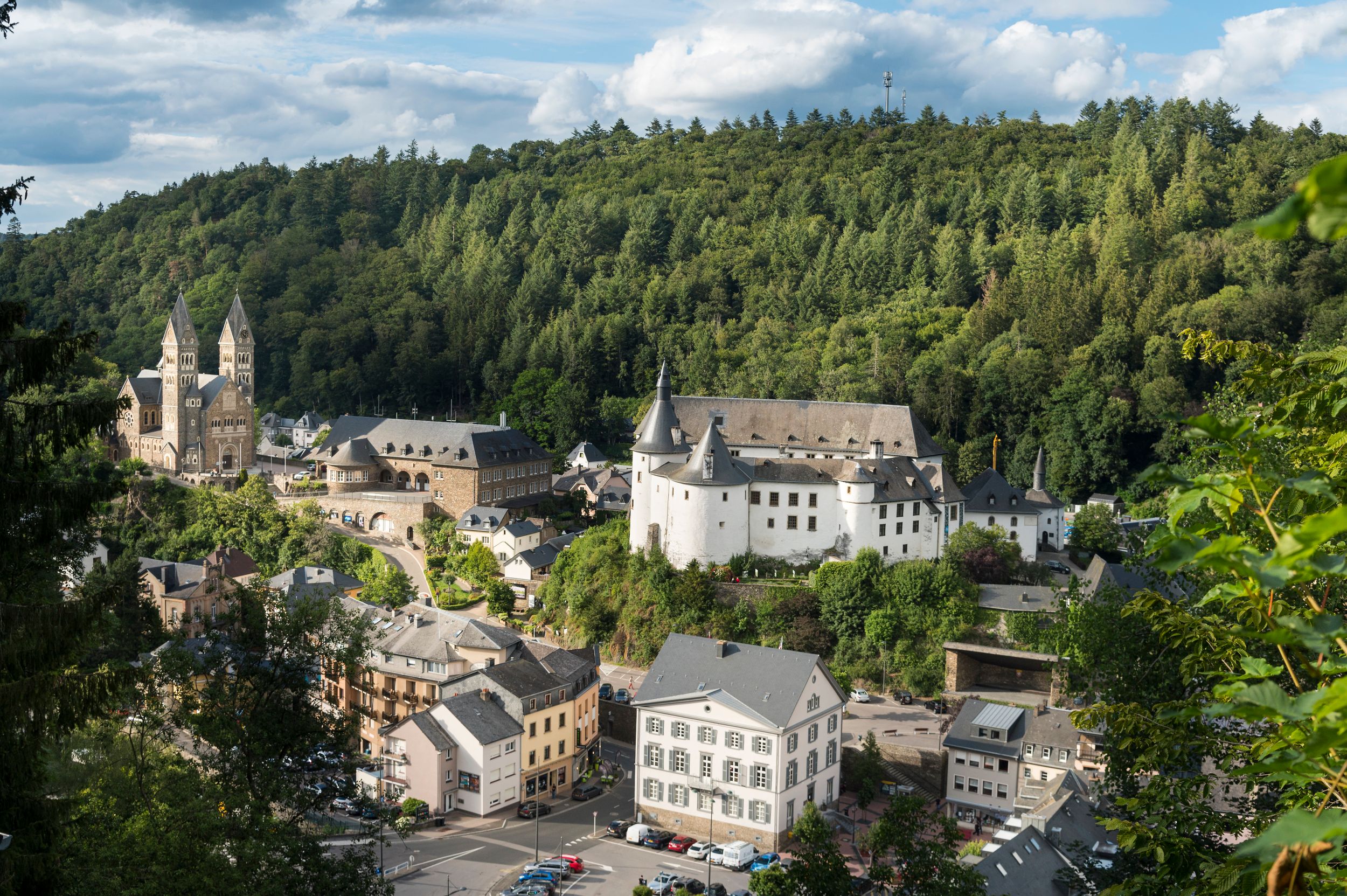
Clervaux
Where? 11, Grand-Rue, L-9710 Clervaux
A Gem in the Luxembourg Ardennes The town of Clervaux is located in the north of Luxembourg, in the heart of the wild landscapes of the Ardennes, also known as the Éislek. Overlooking the town is the imposing 12th-century castle, a landmark that defines the skyline. With its pedestrian streets, rich cultural offering, and a wide network of cycling and hiking trails, Clervaux is one of the most popular destinations in northern Luxembourg.
Clervaux is well worth a visit all year round, making it a favourite amongst tourists and locals. Changing landscapes throughout the seasons and a diverse programme of cultural events give the town its ever-renewed charm.
Architectural and Cultural Heritage of Clervaux
Architecture and culture enthusiasts will find plenty to enjoy in Clervaux. The parish church, dedicated to Saints Cosmas and Damian, was built in the Rhenish Romanesque style. Its twin towers dominate the town.
The Benedictine Abbey of St Maurice, with its red-tiled roofs, is another highlight. Built in a neo-Romanesque style, it holds daily morning mass at 10 a.m., where visitors can listen to Gregorian chants. The abbey shop offers homemade apple juice as well as artisanal products.
The Loretto Chapel is a striking example of baroque architecture in the Éislek region. Its richly decorated façade and interior showcase past craftsmanship.
Clervaux Castle and "The Family of Man" Exhibition
The Clervaux Castle houses the world-renowned photography exhibition The Family of Man, as well as the Battle of the Bulge and Castle Museum and a collection of detailed castle models.
The Family of Man, curated by Luxembourg-born photographer Edward Steichen for the Museum of Modern Art (MoMA) in New York, is part of the UNESCO World Heritage. Today, it is one of the major cultural attractions in Clervaux.
In the same castle, the Battle of the Bulge and Castle Museum documents the fighting in the Ardennes during the Second World War. Another part of the museum showcases 22 scale models of Luxembourg’s castles.
The castle also hosts exhibitions by ‘Clervaux - Cité de l'Image’, making it a must-see for culture lovers and photography enthusiasts.
Exploring Nature Around Clervaux
For those wishing to explore Clervaux’s surroundings, the Éislek Pad Clervaux hiking trail is an excellent choice. This 13‑kilometre route takes in the main sights while offering panoramic views.
Another trail leads through the former animal park, once the hunting ground of the Counts of Clervaux. Today, information panels along the 3‑kilometre route tell the park’s history.
More information about hiking routes and outdoor activities is available at Visit Éislek or at the Tourist Info Clervaux.
Staying and Enjoying Clervaux
The pedestrian area is filled with restaurants and cafés where visitors can sample local Luxembourgish specialities.
Accommodation is available in and around Clervaux, with hotels, guesthouses and campsites providing a warm welcome to travellers.
Practical Tips
Clervaux has a railway station connecting the town to the capital and directly to Liège in Belgium. Since February 2020, public transport in Luxembourg has been free for everyone on trains, trams and buses (except for first-class and season tickets).
Opening hours

